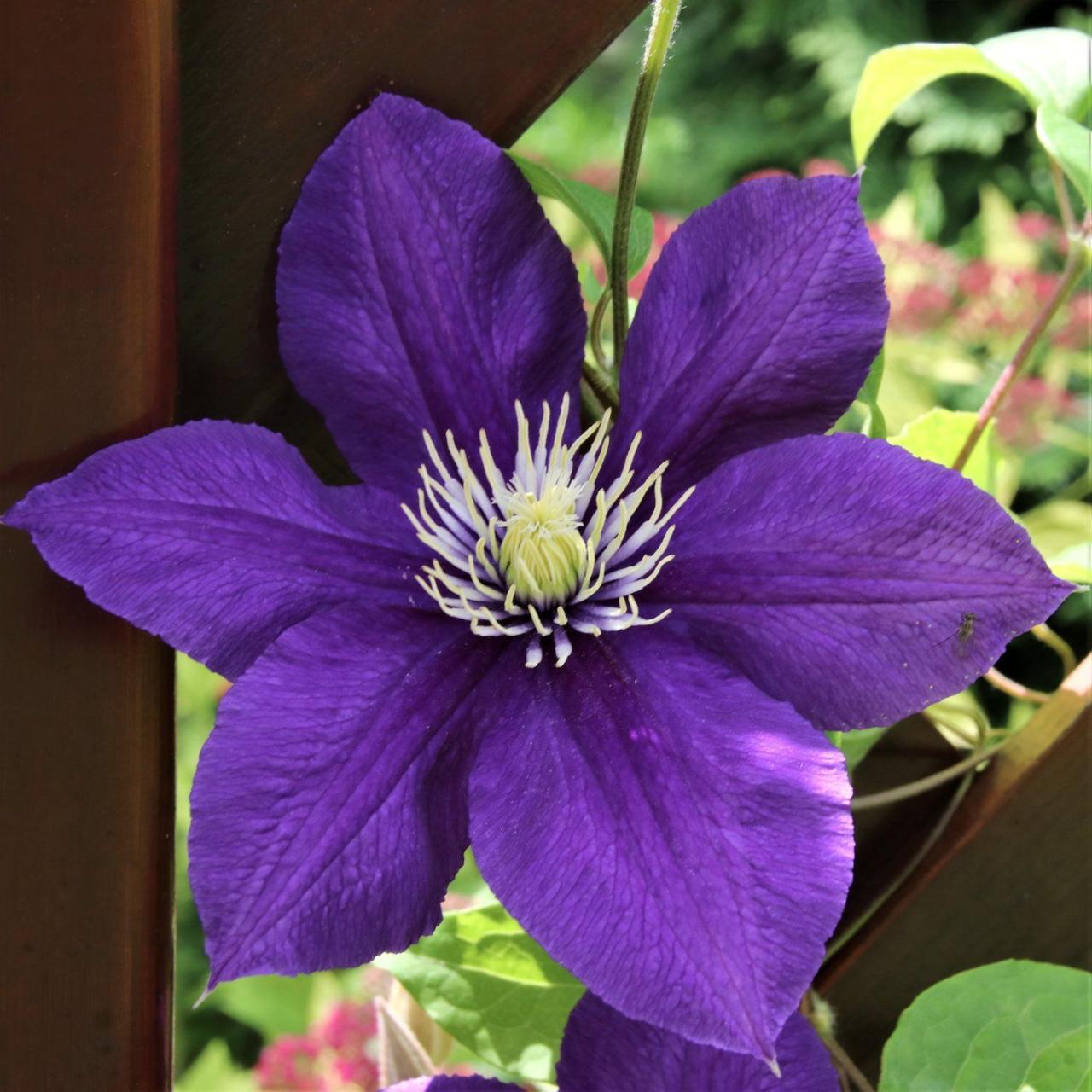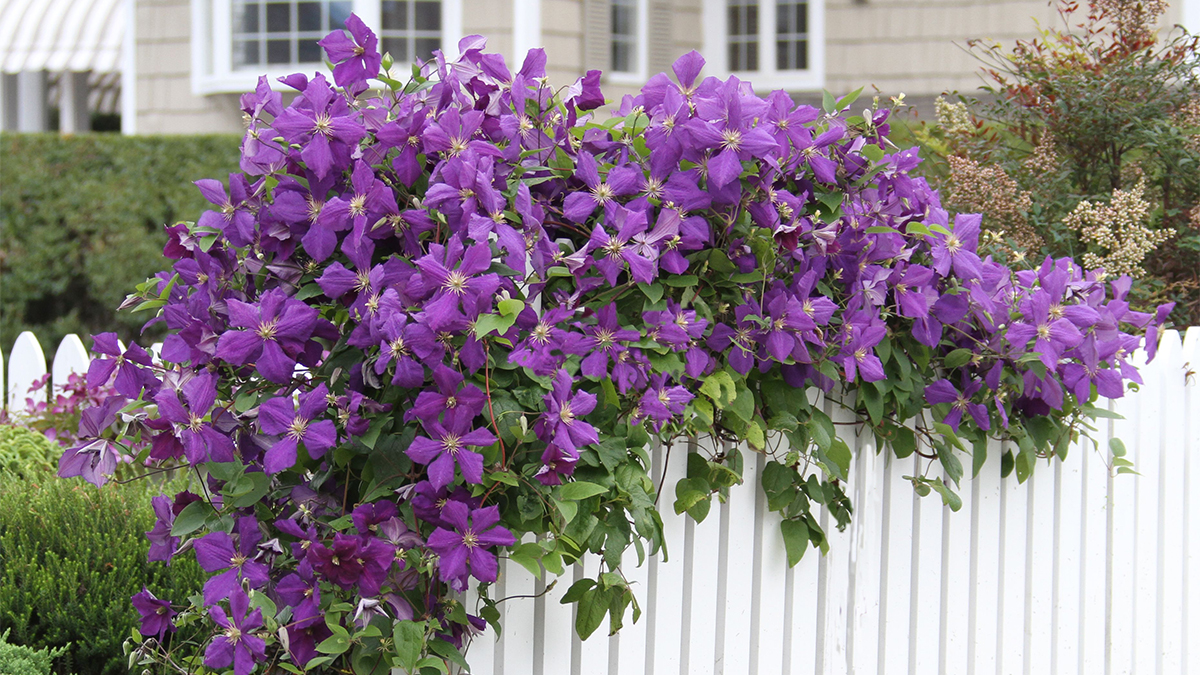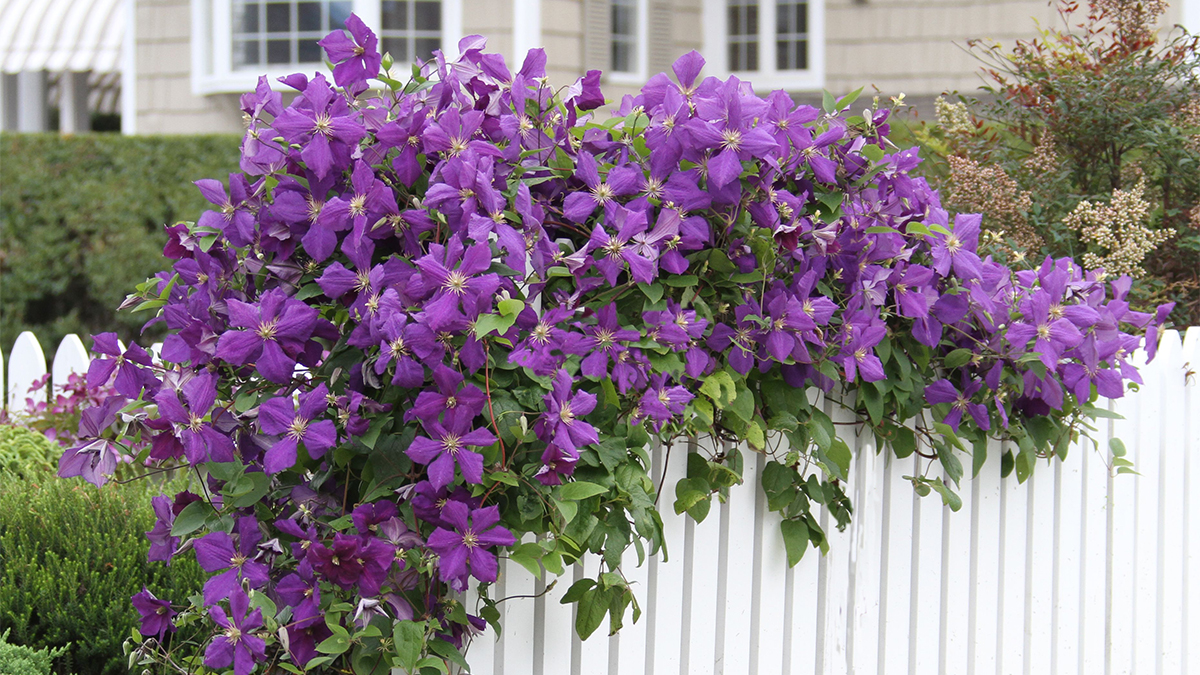The Best Practices for Achieving a Thriving Clematis Garden is a comprehensive guide that delves into the secrets of cultivating these captivating vines. From selecting the right variety to providing optimal care, this article empowers gardeners to create a vibrant and flourishing clematis haven.
Clematis, known for their stunning blooms and graceful growth, can transform any garden into a captivating spectacle. This article will equip you with the knowledge to cultivate these enchanting vines, from selecting the perfect variety to providing optimal care.
By following these best practices, you can create a thriving clematis garden that will be the envy of your neighborhood.
Selecting the Right Clematis Variety
Choosing the right clematis variety is crucial for a thriving garden. Consider your climate, soil type, and desired bloom time to select the perfect clematis for your needs. Understanding the different clematis groups and their growth habits will help you make an informed decision.
Clematis Groups and Growth Habits
Clematis are classified into three main groups based on their pruning requirements and growth habits. Understanding these groups will help you choose the right variety for your garden.
- Group A: Early-flowering clematisbloom on old wood, meaning they produce flowers on stems that grew the previous year. These clematis should be pruned lightly after flowering, removing only dead or damaged stems. Popular examples include Clematis ‘Montana’ and Clematis ‘Armandii’.
- Group B: Large-flowered clematisbloom on both old and new wood, meaning they produce flowers on stems that grew the previous year and on new growth. These clematis should be pruned in late winter or early spring, cutting back stems to just above a pair of strong buds.
Popular examples include Clematis ‘Jackmanii’ and Clematis ‘Nelly Moser’.
- Group C: Late-flowering clematisbloom on new wood, meaning they produce flowers on stems that grew during the current year. These clematis should be pruned back hard in late winter or early spring, cutting stems to just above a pair of strong buds. Popular examples include Clematis ‘Viticella’ and Clematis ‘Etoile Violette’.
Choosing Clematis Based on Climate, Soil Type, and Bloom Time, The Best Practices for Achieving a Thriving Clematis Garden
- Climate:Clematis are generally hardy plants, but some varieties are more tolerant of cold temperatures than others. For example, Clematis ‘Montana’ is a hardy variety that can tolerate temperatures as low as -30°F, while Clematis ‘Nelly Moser’ is more sensitive to cold and may require winter protection in colder climates.
- Soil Type:Clematis prefer well-drained soil that is rich in organic matter. They also need soil that is slightly acidic to neutral. If your soil is heavy clay, you may need to amend it with compost or other organic matter to improve drainage.
- Bloom Time:Clematis varieties bloom at different times of the year. If you want a continuous display of flowers, choose a variety that blooms in early spring, followed by a variety that blooms in mid-summer, and then a variety that blooms in late summer or fall.
Just as understanding the ideal conditions for clematis growth is crucial to a flourishing garden, so too is mastering propagation techniques for other plants. For instance, learning how to propagate schefflera successfully, as outlined in The Best Practices for Propagating Schefflera Successfully , can provide you with a valuable skill for expanding your plant collection.
Similarly, understanding the best practices for achieving a thriving clematis garden will involve selecting the right location, providing adequate support, and maintaining proper soil moisture.
For example, Clematis ‘Montana’ blooms in early spring, Clematis ‘Jackmanii’ blooms in mid-summer, and Clematis ‘Etoile Violette’ blooms in late summer.
Popular Clematis Varieties
- Clematis ‘Montana’: This hardy variety is known for its fragrant, white flowers that bloom in early spring. It is a vigorous climber that can reach up to 30 feet tall. It prefers a sunny location with well-drained soil.
- Clematis ‘Jackmanii’: This classic variety is known for its large, purple flowers that bloom in mid-summer. It is a vigorous climber that can reach up to 15 feet tall. It prefers a sunny location with well-drained soil.
- Clematis ‘Nelly Moser’: This variety is known for its large, pink flowers that bloom in mid-summer. It is a vigorous climber that can reach up to 15 feet tall. It prefers a sunny location with well-drained soil.
- Clematis ‘Viticella’: This variety is known for its small, purple flowers that bloom in late summer. It is a vigorous climber that can reach up to 15 feet tall. It prefers a sunny location with well-drained soil.
- Clematis ‘Etoile Violette’: This variety is known for its large, violet-blue flowers that bloom in late summer. It is a vigorous climber that can reach up to 15 feet tall. It prefers a sunny location with well-drained soil.
Site Selection and Planting

Choosing the right location and planting your clematis correctly are crucial steps for a thriving garden. Clematis thrive in specific conditions, and understanding these requirements will ensure their healthy growth and abundant blooms.
Sunlight Requirements
Clematis need adequate sunlight to flourish. Most varieties prefer a location with at least six hours of direct sunlight daily. However, some varieties, like those with dark-colored flowers, tolerate partial shade. It’s important to note that while clematis need sunlight, their roots prefer shade.
This is why it’s often recommended to plant them near a wall or fence, where the base of the plant can be shaded by the structure.
Soil Type and Drainage
Clematis prefer well-drained soil that is rich in organic matter. The ideal pH level for clematis is slightly acidic to neutral, ranging from 6.0 to 7.0. Heavy clay soil can retain too much moisture, leading to root rot. To improve drainage, you can amend the soil with compost or other organic matter.
Planting Depth and Spacing
Planting clematis at the correct depth and spacing is crucial for their healthy growth. When planting, ensure that the crown of the plant, the point where the roots meet the stem, is at or slightly above ground level. Planting too deep can lead to root rot.Spacing between clematis vines depends on the variety.
Larger varieties may need up to 3-4 feet of space, while smaller varieties can be spaced closer together.
Planting Clematis
Follow these steps for planting a clematis vine:
- Prepare the planting hole:Dig a hole twice as wide and as deep as the root ball of the clematis. Amend the soil with compost or other organic matter to improve drainage and fertility.
- Position the clematis:Place the clematis in the hole, ensuring the crown is at or slightly above ground level. Spread the roots out evenly.
- Backfill the hole:Fill the hole with the amended soil, firming it gently around the roots. Water thoroughly after planting.
- Provide support:Immediately after planting, provide support for the clematis vine to climb. This can be a trellis, fence, or other suitable structure.
- Mulch:Apply a layer of organic mulch around the base of the plant, keeping it away from the crown. Mulch helps retain moisture, suppress weeds, and regulate soil temperature.
Providing Support and Pruning
Clematis vines are vigorous growers that can reach significant heights, making it essential to provide them with sturdy support structures to thrive. These structures not only help the vines climb and display their beautiful blooms but also ensure their stability and prevent damage.
A thriving clematis garden relies on a combination of factors, including proper soil, sunlight, and regular pruning. However, expanding your collection requires understanding how to propagate new plants. The Essential Tips for Effective Clematis Propagation provides valuable insights into techniques like cuttings and layering, allowing you to create more of these beautiful climbers and enjoy their blooms throughout your garden.
Types of Support Structures
Providing support for clematis vines is crucial for their growth and aesthetic appeal. A variety of support structures can be used, each offering unique advantages.
- Trellises:Trellises are versatile structures that come in various sizes and materials, such as wood, metal, or plastic. They can be freestanding or attached to walls, providing vertical support for clematis vines to climb.
- Arches:Arches create a beautiful focal point in the garden and provide a graceful backdrop for clematis vines. They can be made of metal, wood, or even willow branches, and come in various sizes and styles.
- Fences:Fences offer a sturdy and practical support system for clematis vines. They can be made of wood, metal, or brick, and can be used to create a privacy screen or to add visual interest to a garden.
- Obelisks:Obelisks are tall, pointed structures that are ideal for supporting clematis vines that grow upwards. They can be made of metal, wood, or stone, and can be placed in the center of a garden bed or near a wall.
- Pergolas:Pergolas are large, open structures that provide shade and support for climbing plants, including clematis. They can be made of wood, metal, or other materials, and can be customized to fit the size and style of your garden.
Pruning Clematis Vines
Pruning clematis vines is an important aspect of their care. It helps to maintain their shape, promote healthy growth, and encourage flowering. The pruning method used will depend on the clematis group, which is determined by its flowering time and growth habit.
- Group 1:These clematis bloom on old wood, meaning they produce flowers on stems that grew the previous year. Pruning is minimal, usually consisting of removing dead or damaged stems in late winter or early spring.
- Group 2:These clematis bloom on both old and new wood, producing flowers on stems from the previous year and the current year. They can be pruned in late winter or early spring, removing about one-third of the stems to encourage new growth and flowering.
- Group 3:These clematis bloom on new wood, meaning they produce flowers on stems that grew during the current year. They are pruned in late winter or early spring, cutting back the stems to just above a pair of buds.
Note:It is essential to identify the clematis group before pruning. Incorrect pruning can lead to reduced flowering or even damage to the plant.
Watering and Fertilizing
Clematis vines thrive in consistently moist soil, making proper watering a crucial aspect of their care. Equally important is the provision of essential nutrients through fertilization, which supports vigorous growth and abundant blooms.
Watering Clematis Vines
Clematis vines require consistent moisture, especially during the active growing season (spring and summer). However, they are sensitive to overwatering, which can lead to root rot.
- Water deeply and thoroughly, ensuring the soil is moist to a depth of 12-18 inches, but avoid saturating the soil.
- During periods of drought, increase watering frequency to maintain consistent moisture levels.
- Water early in the morning to allow the soil to dry slightly before nightfall, reducing the risk of fungal diseases.
- Use a soaker hose or drip irrigation system to deliver water directly to the root zone, minimizing water loss through evaporation.
Fertilizing Clematis Vines
Clematis vines benefit from regular fertilization, providing them with the nutrients needed for optimal growth and flowering.
- Apply a balanced, slow-release fertilizer in early spring, before new growth emerges.
- Apply a second dose of fertilizer in mid-summer, during the peak blooming period.
- Use a fertilizer with a higher phosphorus content (the middle number in the NPK ratio) to promote flowering.
- Avoid applying fertilizer directly to the base of the plant, as this can burn the roots.
- Instead, spread the fertilizer around the base of the plant, ensuring it is at least 6 inches away from the stem.
Mulching Clematis Plants
Mulching around clematis plants offers several benefits, including moisture retention, weed suppression, and temperature regulation.
- Apply a 2-3 inch layer of organic mulch, such as shredded bark, wood chips, or compost, around the base of the plant.
- Keep the mulch away from the base of the stem to prevent rot.
- Mulch helps retain moisture, reducing the frequency of watering needed.
- Mulch also suppresses weed growth, reducing competition for nutrients and water.
Managing Pests and Diseases

While clematis are generally hardy plants, they can be susceptible to a range of pests and diseases. Recognizing these threats and implementing preventive measures can help you maintain a healthy and thriving clematis garden.
Common Pests and Diseases
Clematis are susceptible to various pests and diseases that can affect their growth, flowering, and overall health. Recognizing these threats is crucial for timely intervention and prevention.
- Clematis Wilt:This fungal disease, caused by -Ascochyta clematidina*, is characterized by wilting and browning of leaves and stems. It often affects mature vines, leading to dieback and even death.
- Powdery Mildew:This fungal disease, caused by -Erysiphe polygoni*, appears as a white powdery coating on leaves, stems, and flowers. It can weaken the plant and reduce its vigor.
- Leaf Spot Diseases:Various fungal diseases, such as -Cercospora*, -Septoria*, and -Alternaria*, can cause spots and lesions on leaves, leading to defoliation and weakened growth.
- Root Rot:Caused by various fungal pathogens, root rot occurs in poorly drained soil, leading to wilting, yellowing, and stunted growth.
- Aphids:These small, sap-sucking insects can infest clematis plants, causing leaf curling, stunted growth, and honeydew production.
- Spider Mites:These tiny, spider-like creatures can cause yellowing and stippling of leaves, and in severe cases, leaf drop.
- Slugs and Snails:These pests can damage foliage and stems, leaving behind slime trails.
Preventive Measures
Preventing pest and disease problems is crucial for maintaining a healthy clematis garden.
- Choose Disease-Resistant Varieties:Select clematis cultivars known for their resistance to common diseases, such as -Clematis viticella* and -Clematis texensis*.
- Provide Good Air Circulation:Ensure adequate spacing between plants to promote air circulation and reduce the risk of fungal diseases.
- Water Appropriately:Avoid overwatering, which can lead to root rot, and ensure proper drainage to prevent waterlogging.
- Maintain Cleanliness:Regularly remove and dispose of fallen leaves and debris to prevent disease spread.
- Inspect Regularly:Monitor plants for signs of pests and diseases, such as wilting, discoloration, or unusual spots. Early detection allows for timely intervention.
Treating Common Clematis Problems
Once pests or diseases are identified, prompt action is necessary to prevent further damage.
Organic Methods
- Neem Oil:This natural oil is effective against aphids, spider mites, and other pests.
- Insecticidal Soap:This soap-based solution is effective against aphids, mealybugs, and other soft-bodied insects.
- Diatomaceous Earth:This powdered substance is effective against slugs and snails.
- Copper Fungicide:This organic fungicide can be used to treat fungal diseases like powdery mildew and leaf spot.
- Baking Soda Solution:A mixture of baking soda and water can be used to control powdery mildew.
Chemical Methods
- Fungicides:Chemical fungicides are available to treat fungal diseases, but should be used cautiously and according to label instructions.
- Insecticides:Chemical insecticides are available to control pests, but should be used as a last resort and only when necessary.
Enjoying Your Thriving Clematis Garden
After successfully establishing and nurturing your clematis garden, it’s time to reap the rewards of your efforts. Witnessing the vibrant blooms and lush foliage is a testament to your dedication and the inherent beauty of these versatile vines.
Clematis Garden Design
Clematis gardens can be designed to serve various purposes, creating a visually appealing and functional space.
- Privacy Screens:Clematis vines, with their dense growth habit, can effectively create privacy screens, blocking unwanted views and creating a sense of seclusion. For example, planting clematis along a fence or trellis can transform an ordinary boundary into a verdant and private oasis.
- Decorative Features:Clematis can be used to enhance existing structures, such as arbors, pergolas, and gazebos. Their cascading blooms can add a touch of elegance and charm, transforming these structures into focal points within the garden.
- Pollinator Gardens:Clematis flowers are a valuable source of nectar and pollen for pollinators, attracting butterflies, bees, and hummingbirds. Designing a clematis garden with a variety of blooming times can provide a continuous food source for these beneficial insects.
Capturing Clematis Beauty in Photography
Clematis vines offer a myriad of photographic opportunities, capturing their beauty and intricate details.
- Lighting:The best time to photograph clematis is during the morning or evening hours, when the light is soft and diffused. Avoid harsh midday sun, which can create harsh shadows and wash out the colors of the flowers.
- Composition:Consider the background and surrounding elements when composing your shot. Using a shallow depth of field can help isolate the clematis flowers and create a sense of depth.
- Focus:Focus on the details of the flowers, such as the delicate petals, the intricate stamens, and the contrasting colors.
Last Word
By following these best practices, you can cultivate a flourishing clematis garden that will reward you with an abundance of vibrant blooms and captivating beauty. Remember, patience and consistent care are key to achieving a thriving clematis garden. So, choose your favorite varieties, create the perfect environment, and enjoy the captivating beauty of these enchanting vines.
FAQ Guide: The Best Practices For Achieving A Thriving Clematis Garden
How often should I prune my clematis?
Pruning frequency depends on the clematis group. Group 1 clematis require minimal pruning, while Group 2 clematis benefit from light pruning after flowering. Group 3 clematis need hard pruning in late winter or early spring.
What are some common pests and diseases that affect clematis?
Common pests include aphids, spider mites, and leafhoppers. Diseases include clematis wilt, powdery mildew, and leaf spot. Good sanitation practices and proper care can help prevent these issues.
Can I grow clematis in containers?
Yes, many clematis varieties thrive in containers. Choose a pot with adequate drainage and provide consistent watering and fertilization.
